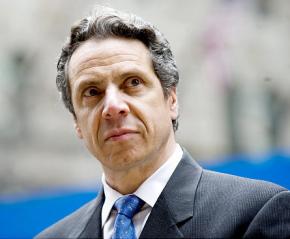Behind Cuomo’s tax plan
looks at the fine print in a plan for a more progressive tax system.
UNTIL SUNDAY, December 4, Andrew Cuomo, the Democratic governor of New York, was insisting that he would never raise taxes on the rich.
The New York Times noted that when he was running for governor, he declared, "Raising taxes is not an option--period." He successfully ended New York's "millionaire's tax"--a surcharge on single individuals making more than $200,000 and married couples with incomes over $300,000--by opposing efforts to extend it past its expiration at the end of this year.
But that Sunday, New York newspapers suddenly received an op-ed article written by Cuomo saying that he would introduce a new, more progressive tax structure. By Tuesday, the Republican leader of the state Senate and the Democratic speaker of the Assembly joined Cuomo in announcing their support for a plan that would impose a higher marginal tax rate on the state's richest households, while reducing tax rates for "middle-income families."
Before the end of the week, the tax plan had passed Assembly and Senate, and Cuomo had signed it into law. Some legislators didn't even get to read it before they voted on it.

By the time lawmakers acted, it was clear that the state was in big trouble. Estimates of a huge budget deficit were growing worse every day--the deficit for the fiscal year beginning April 1, 2012 was predicted to be at least $3.5 billion.
Cuomo had already slashed social spending and forced state unions to accept pay freezes and pension cuts. And the Occupy Wall Street movement made it almost impossible for Cuomo and the Democrats to impose new cuts.
A Quinnipiac poll found that 67 percent of New Yorkers "agree with the views of the Wall Street protesters." Some 61 percent supported the extension of the millionaire's tax. Cuomo had earned himself the nickname "Governor One Percent."
Cuomo's about-face does represent at least a partial retreat from the all-austerity-all-the-time direction of politicians at every level of government, federal, state and local. The idea of raising taxes on the rich barely gets a hearing in mainstream politics. For example, the chief revenue-raising measure pushed by California's Democratic Gov. Jerry Brown was an extension of a regressive sales tax increase.
STILL, THE liberals who rushed to rhapsodize over Cuomo's tax deal should look a little closer.
The New York State Working Families Party, set up by some labor leaders to support "progressive" Democrats like Cuomo, called the tax plan the "first big legislative victory of the Occupy age."
But the Business Council of New York State was equally quick to endorse Cuomo's new taxes, declaring in a statement: "The Business Council commends Governor Cuomo, Senate Majority Leader Skelos and Speaker Silver for coming to a bipartisan agreement that will encourage job creation and economic development."
If business and labor leaders both love this plan, it's worth looking at what it actually does. The increased tax rate will only affect households with incomes over $2 million a year. As for the effect of reduced rates (taking into account the expiration of the millionaire's tax surcharge):
A family making $50,000 a year will get less than $200 a year in tax cuts.
Those making $100,000 a year get less than $400 a year in tax cuts.
Those making $1 million a year will get more than $20,000 a year in tax cuts, or $408 per week.
-- Households making $1.99 million a year will enjoy $40,000 a year in tax cuts.
The New York Times estimates that the tax plan will provide New York with $2 billion in extra revenue. But that will still leave the state with a $2 billion deficit next year.
"Governor One Percent" will have to find funds to balance the budget next year. It can either come from the 1 percent or the 99 percent. Cuomo would rather take it from the 99 percent. If labor and working people want it to come from the 1 percent, they need to start mobilizing now.



